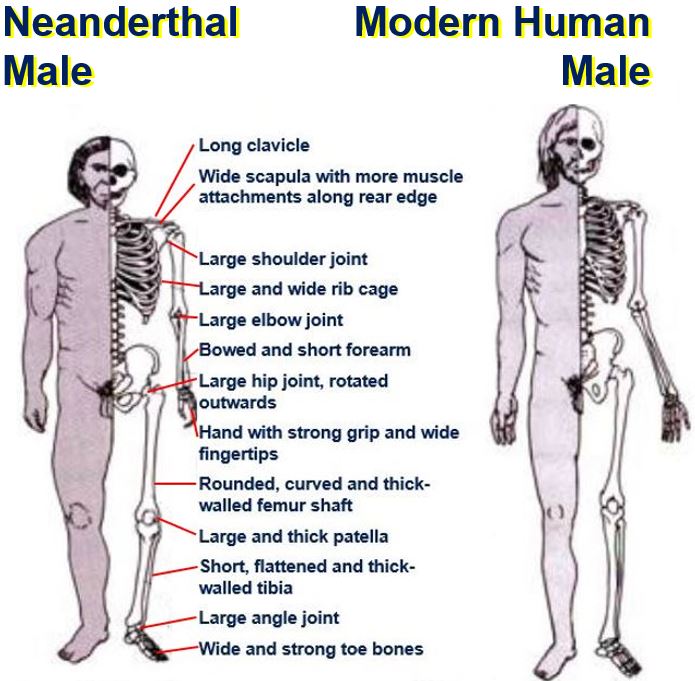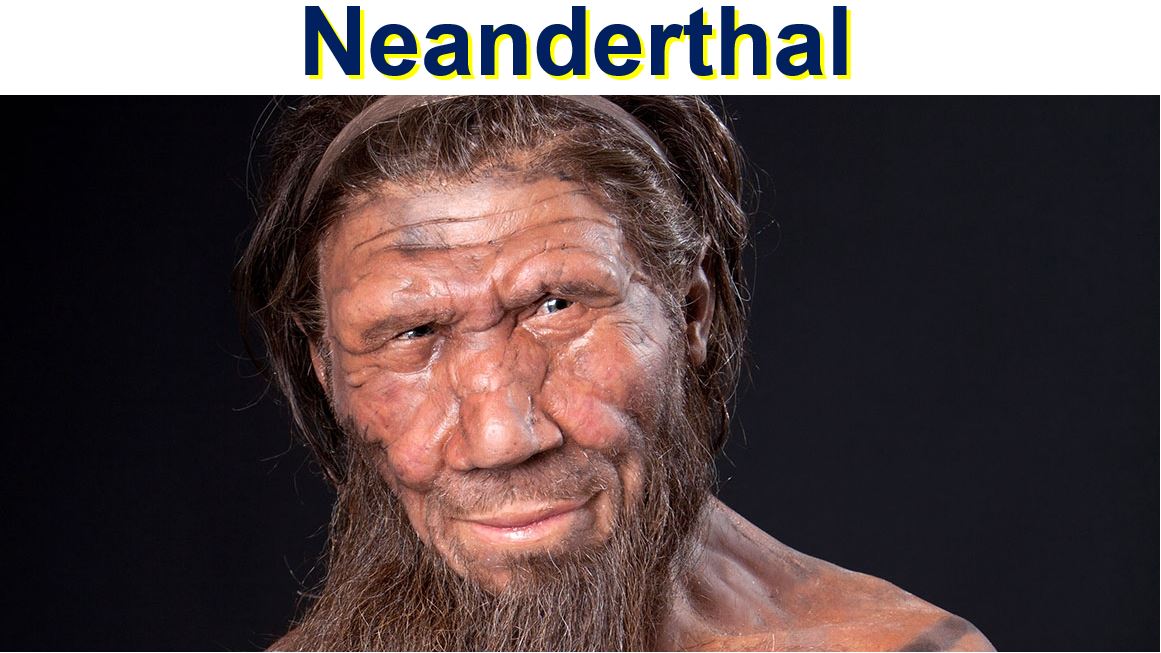Neanderthals and modern humans mated 100000 years ago, considerably earlier than 60,000 years ago when modern humans first ventured out of Africa, which is what experts had previously thought.
Using a range of DNA analysis methods, an international team of scientists has identified an interbreeding event between Neanderthals and modern humans about 100,000 years ago.
This means that modern humans left Africa much earlier than we had thought. The scientists wrote about their study and findings in the prestigious scientific journal Nature (citation below).
 Scenario of modern humans mating with Neanderthals: Neanderthal DNA in present-day humans outside Africa originates from interbreeding that occurred 47,000 – 65,000 years ago (green arrow). Modern human DNA in Neanderthals is probably a consequence of earlier contact between the two groups about 100,000 years ago (red arrow). (Image: mpg.de. Credit: Ilan Gronau)
Scenario of modern humans mating with Neanderthals: Neanderthal DNA in present-day humans outside Africa originates from interbreeding that occurred 47,000 – 65,000 years ago (green arrow). Modern human DNA in Neanderthals is probably a consequence of earlier contact between the two groups about 100,000 years ago (red arrow). (Image: mpg.de. Credit: Ilan Gronau)
Those that left early became extinct
These modern humans, the scientists explained, later became extinct and were therefore not the ancestors of present-day people outside Africa who left the continent about 65,000 years ago.
Study co-leader, Sergi Castellano, from the Max Planck Institute for Evolutionary Anthropology, said:
“We knew from Neanderthal DNA found in the genomes of humans outside Africa that Neanderthals and humans have interbred. This interbreeding is estimated to have happened less than 65,000 years ago, around the time that modern human populations spread across Eurasia from Africa.”
“We now find evidence for a modern human contribution to the Neanderthal genome. This is likely the result of much earlier interbreeding.”
First co-author of the new paper, Martin Kuhlwilm, who identified the regions of the Altai Neanderthal genome that come from modern humans, said:
“I was looking to see if I could find regions in the genome where the Neanderthal genome from Siberia has sequences resembling those in humans. We know that contemporary non-Africans have traces of Neanderthal in them, so they were not useful to us.”
“So we instead used genomes of contemporary individuals from across Africa to identify mutations which most of them have in common. Some of these mutations occur together in regions of the Altai Neanderthal genome, a sign of interbreeding.”
 While Neanderthals and modern humans were genetically quite similar, there were a number of physical differences. In 2014, Ewen Callaway wrote in Nature that when the two species interbred, the hybrid offspring most likely suffered from significant fertility problems.
While Neanderthals and modern humans were genetically quite similar, there were a number of physical differences. In 2014, Ewen Callaway wrote in Nature that when the two species interbred, the hybrid offspring most likely suffered from significant fertility problems.
Siberian Neanderthal had traces of modern human genes
The scientific team’s evidence of ‘gene flow’ from descendants of modern humans into the Neanderthal genome applies to one individual Neanderthal, whose remains were unearthed in a cave in the Altai Mountains near the Russia-Mongolia border, southern Siberia.
In this study, two Neanderthals from European caves were sequenced – one from Spain and another from Croatia. Neither of them had any DNA derived from modern humans.
Castellano and colleagues also analyzed the genome of a Denisovan (extinct human) whose remains were found in the same Altai Mountains cave as the Neanderthal specimen. Unlike the Neanderthal, the Denisovan remains carried no traces of modern human DNA.
This does not necessarily mean that modern humans never interbred with European Neanderthals or Denisovans. But it does mean, that “the signal we are seeing in the Altai Neanderthal probably comes from an interbreeding event that occurred after this Neanderthal lineage diverged from its European cousins, a little more than 100,000 years ago,” said co-author Adam C. Siepel, a computational biologist who works at Cornell University.
A modern human group separated early
The DNA sequences from modern humans that were found in the Altai Neanderthal appear to originate from a modern human group that separated early from their main population.
 Neanderthals had thick, strong bones and muscular shoulders, arms, legs, and necks. They also had large brains. In fact, scientists say their brains were slightly larger than those of modern humans. (Image: Natural History Museum, London).
Neanderthals had thick, strong bones and muscular shoulders, arms, legs, and necks. They also had large brains. In fact, scientists say their brains were slightly larger than those of modern humans. (Image: Natural History Museum, London).
Co-first author Dr. Ilan Gronau, from the Arazi School of Computer Science at the Herzliya Interdisciplinary Center, Israel, said:
“[The modern humans separated early] about the time present-day African populations diverged from one another, around 200,000 years ago.”
The modern human whose genes have been found in this particular Neanderthal specimen must have come from a population that ventured out of Africa a long time before the migration of the ancestors of present day Asians and Europeans from Africa less than 65,000 years ago, the researchers said.
Therefore, there must have been a long time-lag between when this group branched off the modern human family tree, approximately 200,000 years ago, and when they contributed their genes to the Altai Neanderthal, around 100,000 years ago, before they themselves became extinct.
Citation: “Ancient gene flow from early modern humans into Eastern Neanderthals,” Svante Pääbo, Martin Kuhlwilm, Matthias Meyer, Adam Siepel, Ilan Gronau, Melissa J. Hubisz, Cesare de Filippo, Aida M. Andrés, Bence Viola, Javier Prado-Martinez, Martin Kircher, Qiaomei Fu, Hernán A. Burbano, Pavao Rudan, Dejana Brajkovic, Carles Lalueza-Fox, Marco de la Rasilla, Antonio Rosas, Željko Kucan, Ivan Gušic, Tomas Marques-Bonet & Sergi Castellano. Nature. 17 February, 2016. DOI: 10.1038/nature16544.
Video – How Neanderthal are you?
